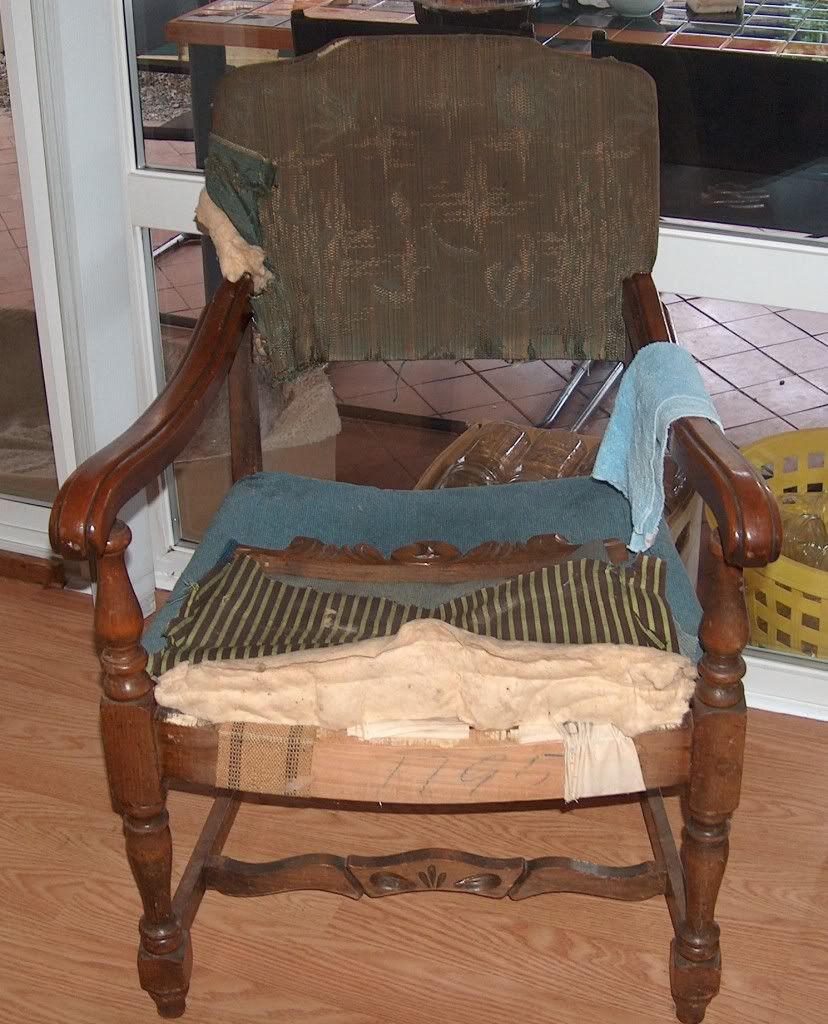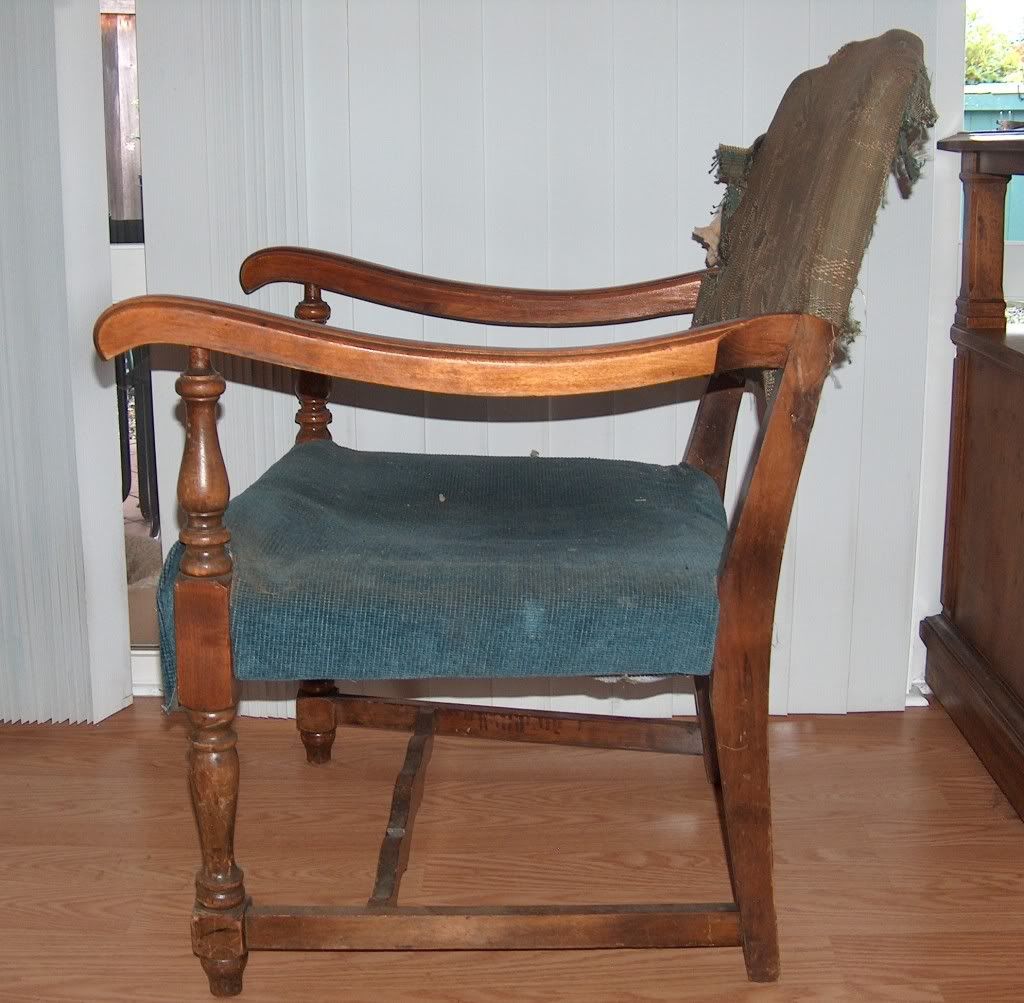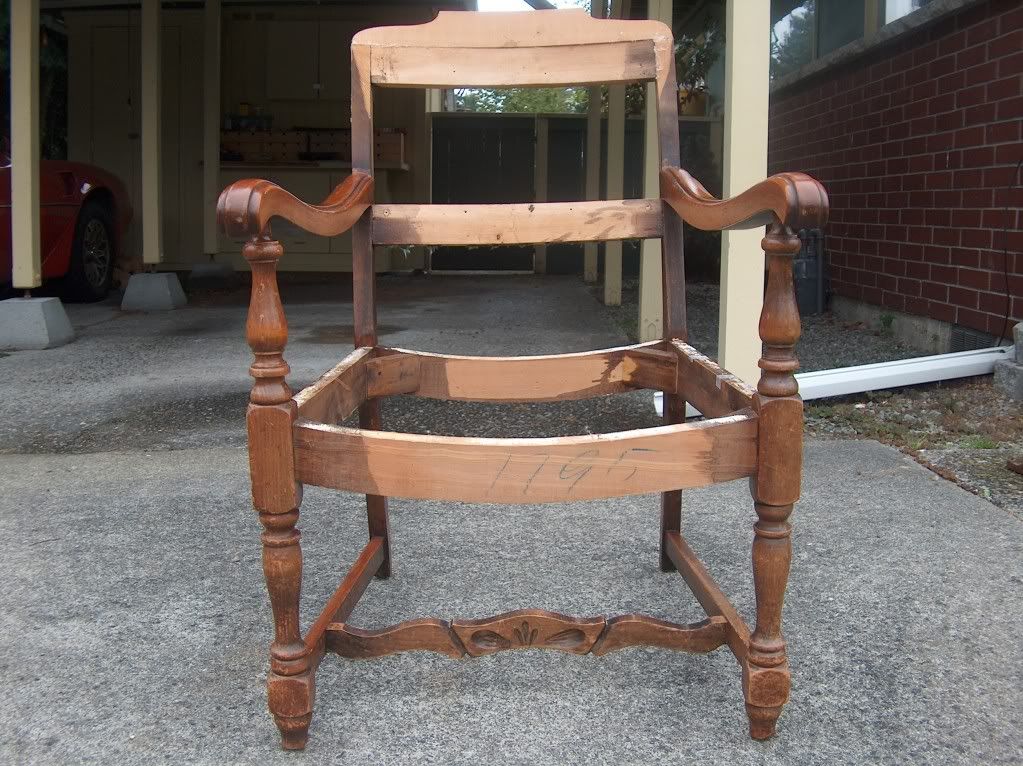Hi again... Here is the chair that started my internet search on antiques. It belonged to my Grandma and I have pics of my Dad with the chair in 1942 but it was probably around earlier than that. As much as I have looked at chair styles in the past few days, I can't guess what it would be - Any opinions?
There were 4 layers of ulpostery on the seat back. The last one was held down with the nails from my prior post and it was done professionally and most likely prior to my Grandparent's ownership. They were depression era folks and would have saved their money before spending it on that. In fact, I suspect subsequent upholstery layers were done by Nana.
Written on the front of the chair in grease pencil is 1795. There was a piece of thin cardboard supporting the batting in the backrest that said "1795 as 1845". I suspect the top most piece of the chair was added and the tops of the sides (of the back) were shaved off a bit. You can see this in the pics.
The bottom support (stretcher?) seems hand made as it is not perfectly symmetrical.
There is another piece that fits on after the upholstery that is also hand carved. I'm not sure if it originally went there or maybe on the top of the back rest where I suspect a piece was added later.
What I am curious about is an approximate date. Could it really be 1795 or 1845? and any opinions on style of the chair? And of course if you recognize a maker!!
I can’t thank you enough for all your help!
Front view of the chair after I started removing upholstery (sorry)

Side view of chair showing how the upholstery goes on the chair.

Naked Chair. Note how there is a tad bit shaved off the tops of the backrest in a "V"-ish shape. This was probably done later, perhaps the last time it was upholstered professionally.

You can see where the hand carved piece was on the backrest. It goes on after the upholstery.

Close up of the muslin (?) webbing used for the seat. It was nailed on with the type of nails from my prior post.

Close up of the hand carved piece that goes on the back rest.

Top view of the caved piece showing saw marks. The underside of the hand rests have similar saw marks
